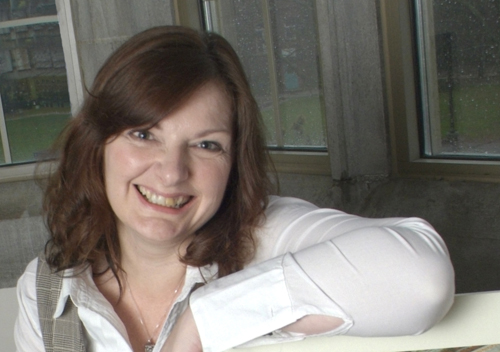
Think of it as the Facebook of Renaissance Italy.
Without the Internet, social networking was tougher in the 1500s, but Vincenzo Gonzaga, Duke of Mantua from 1587 to 1613, found a way. He called it his “gallery of beauty.”
It was a collection of more than 30 painted portraits of women from across Europe. He even hired his own artists and commissioned them to travel to other countries to paint the portraits of those he wanted to include. Other aristocrats followed suit and created their own galleries.
Art history professor Sally Hickson says these galleries show that social networking is not as new as we might imagine. It seems to have been popular among the wealthy in Renaissance Italy, although in a rather different form. As she explains: “Women wanted to be included in these galleries, and for both the women and the gallery owners, it was about who had the most friends and was the most popular. Yes, just like Facebook.”
Women in the gallery were not included only because of physical beauty, although Hickson points out that beauty, especially female beauty, was very important during this time period. Many were chosen because they were married or related to powerful men of the time, she speculates.
“Women also exchanged portraits with each other,” she adds. In a time when travel was slow and often difficult, these paintings and the letters they mailed helped them keep in touch and expand their social networks.
As an art historian, Hickson studies not only the works of art created during this time period, but also the ways in which art was used in people’s daily lives. Often, art adds beauty and style to people’s homes, but these collections of individual portraits suggest another way that art helped to create connections between people.
Gonzaga, she points out, was networking with important people across Europe by sending the artists out to paint portraits. “It would be very flattering to be asked to sit for a portrait to be included in his gallery of beauty.” (Certainly it’s several notches above being asked to be someone’s Facebook friend, but the idea is the same.) There might also be a chilling effect on the status of someone who was not invited to be included in the collection.
Gonzaga, of course, had additional motivation: he could elevate his own social status by inviting people in to see the gallery and be impressed by all the elegant and well-connected women he knew.
While studying these portrait collections, Hickson learned about a manuscript owned by Francis I of France, who ruled several decades before Vincenzo Gonzaga’s time. The manuscript consisted of small painted portraits of women from the Italian city of Milan which had been recently taken over by France. Each portrait was hidden by a little flap of paper with a poem about the woman that was written on the outside. The portrait subjects were classified in the manuscript as widows, wives and maidens.
Hickson believes this may have been used in some kind of parlour game, where people might read the poem and guess who the woman was before lifting up the flap. “They were all women from important families in Milan,” she adds. “I think there may have been an element of control and possession there as well.” Women had an important role in the functioning of the court and the community, and would have been involved in the games and perhaps discussion about the women.
Portable portrait galleries existed as well, even though this was long before the day of the iPhone. Hickson found that the Italian soldiers going to war in France brought with them picture books with portraits of the most beautiful and desirable French prostitutes.
Hickson discovered these Renaissance approaches to social networking while studying Isabella d’Este, who was Vincenzo Gonzaga’s grandmother and a leading figure in the Italian Renaissance in her own right. Hickson says Isabella was a prolific letter-writer who communicated with women in other parts of Europe, sharing her recipes for perfumes and foods. Isabella was also a trend-setter. She designed a headdress that became a popular style; the artist Titian painted a portrait of her wearing it.
Hickson’s research has centred on the small Italian town of Mantua, but she also visits regularly the cities of Venice, Florence and Milan ─ to embrace the culture, food and, of course, the work produced by some of the world’s most influential artists over centuries of time.